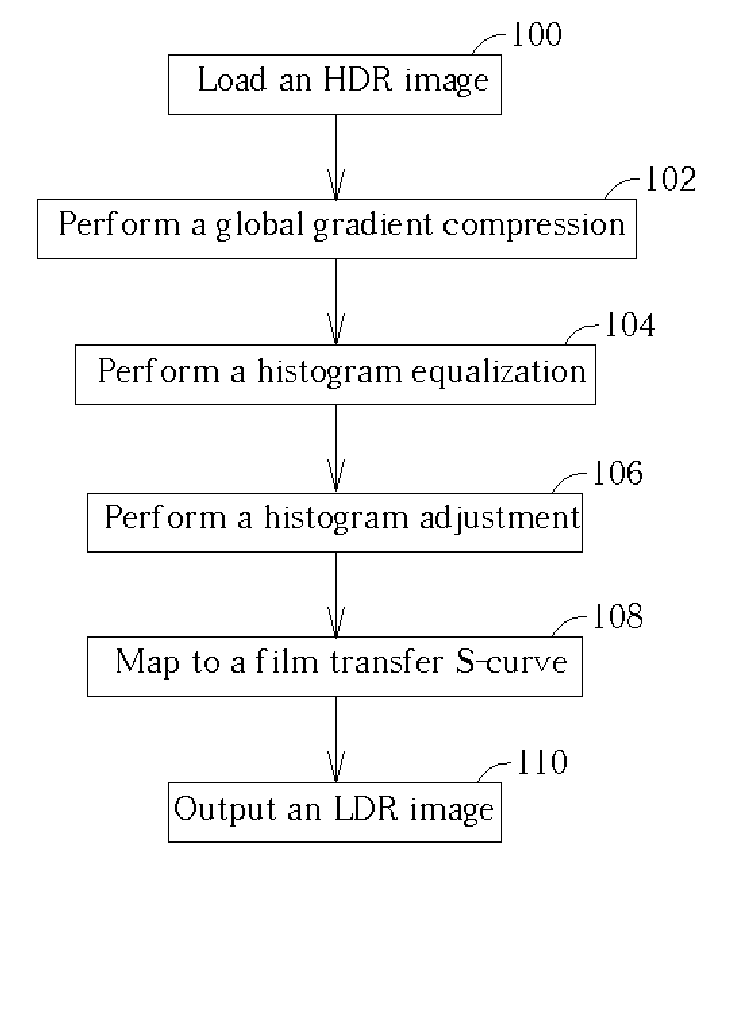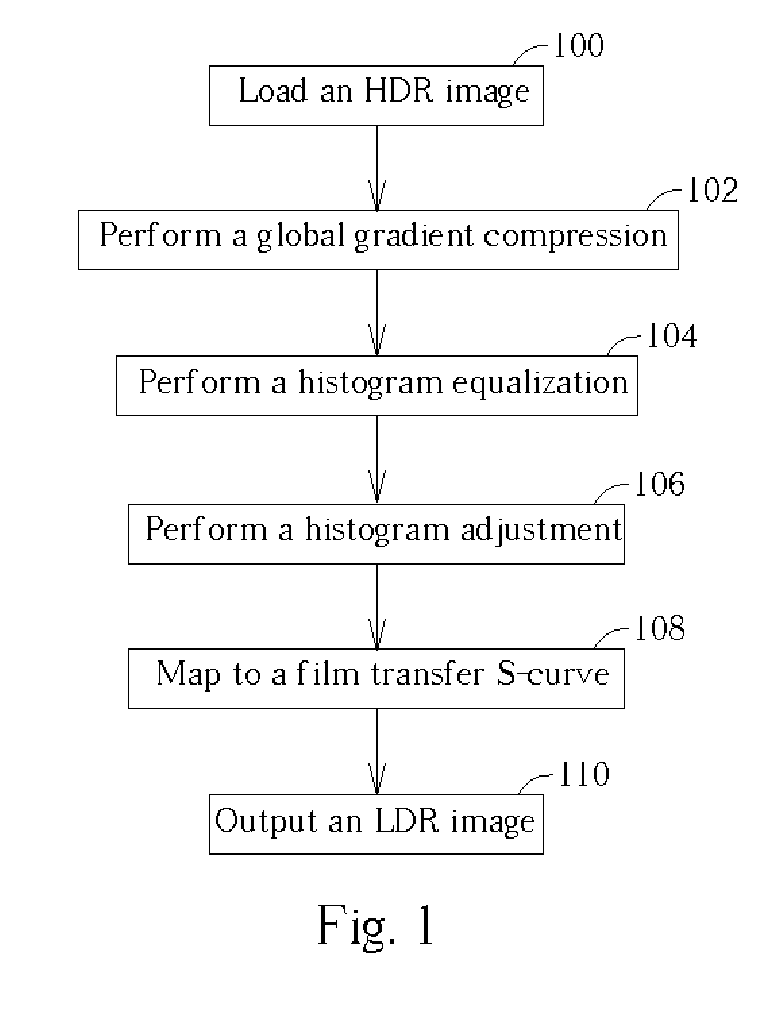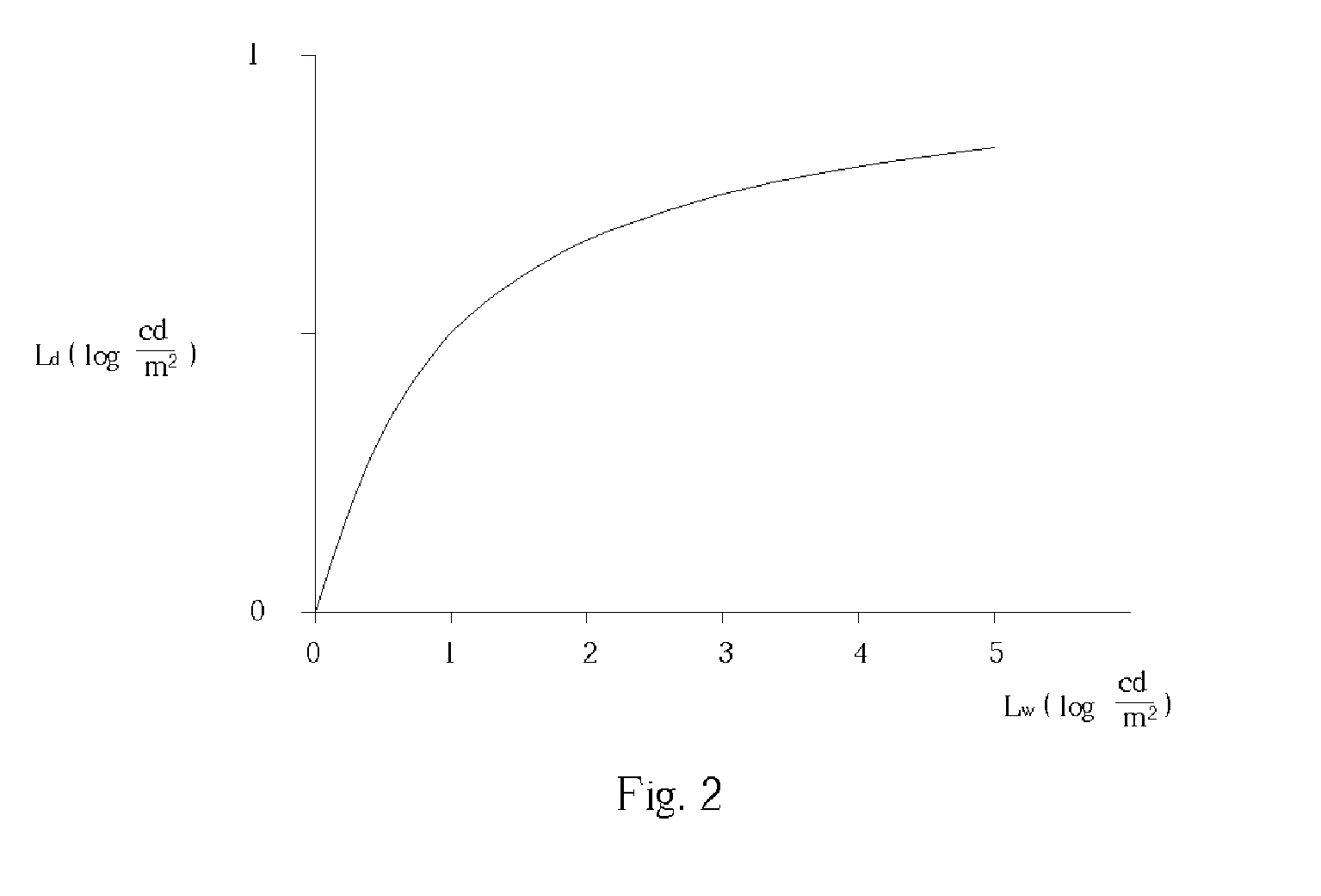Method and apparatus for transforming a high dynamic range image into a low dynamic range image
a high dynamic range image and low dynamic range technology, applied in the field of image processing methods, can solve the problems of insufficient hdr image data corresponding dynamic range of prior art format, inability to capture and render high dynamic range images, and full visual artifacts in human vision, so as to improve image processing performance, improve the contrast of pixels originally with luminance value in the middle luminance range, and improve the effect of the claimed method
- Summary
- Abstract
- Description
- Claims
- Application Information
AI Technical Summary
Benefits of technology
Problems solved by technology
Method used
Image
Examples
Embodiment Construction
[0019] Please refer to FIG. 1, which is a flow chart of the tone mapping process according to the present invention. The tone mapping process according to the present invention is described as follows. First, an HDR image is loaded (step 100). The HDR image, as mentioned above, is generated from a plurality of images captured at different exposures, and the HDR image corresponds to a wide dynamic range greater than that of a standard display device. Therefore, the original dynamic range of the inputted HDR image needs to be compressed into a new low dynamic range available to the standard display device. In addition, the human visual system is not very sensitive to absolute luminance, but rather responds to local luminance changes and reduces the effect of large global illumination differences. Therefore, a global gradient compression is performed to compress the original dynamic range and reduce the global illumination differences. In order to simplify computation complexity and im...
PUM
 Login to View More
Login to View More Abstract
Description
Claims
Application Information
 Login to View More
Login to View More - R&D
- Intellectual Property
- Life Sciences
- Materials
- Tech Scout
- Unparalleled Data Quality
- Higher Quality Content
- 60% Fewer Hallucinations
Browse by: Latest US Patents, China's latest patents, Technical Efficacy Thesaurus, Application Domain, Technology Topic, Popular Technical Reports.
© 2025 PatSnap. All rights reserved.Legal|Privacy policy|Modern Slavery Act Transparency Statement|Sitemap|About US| Contact US: help@patsnap.com



